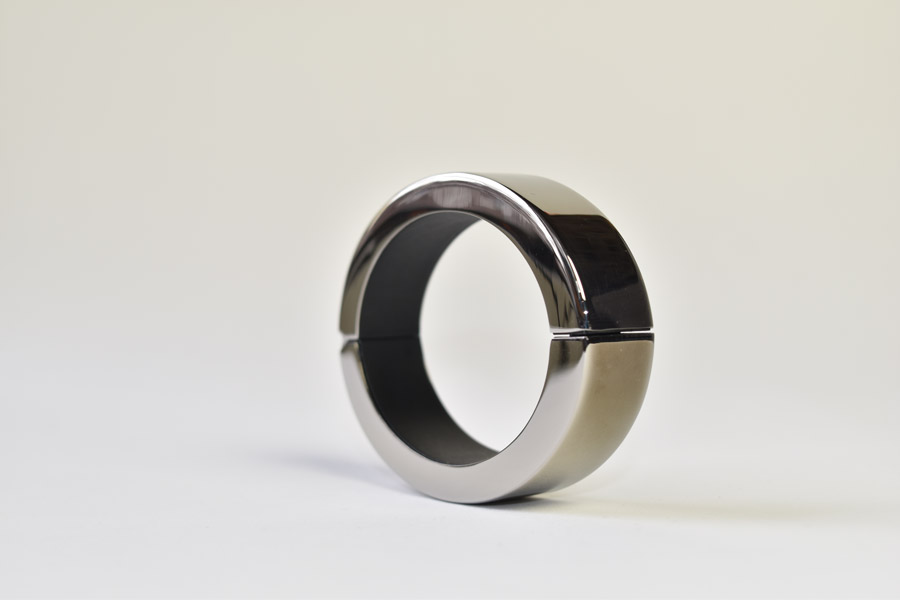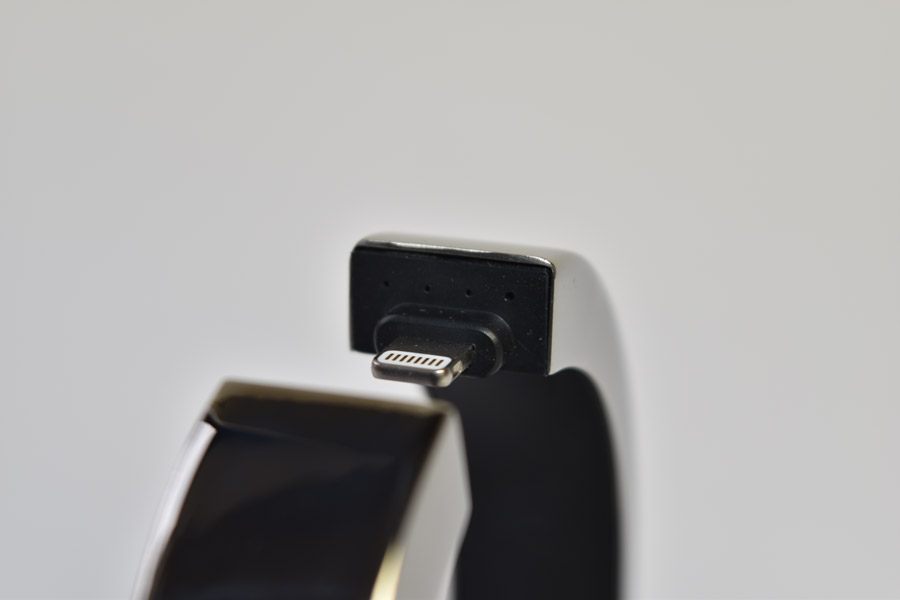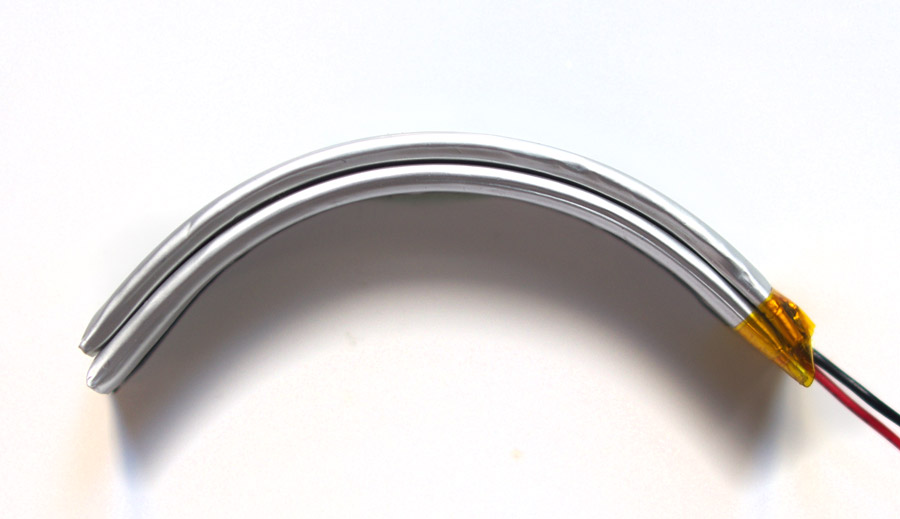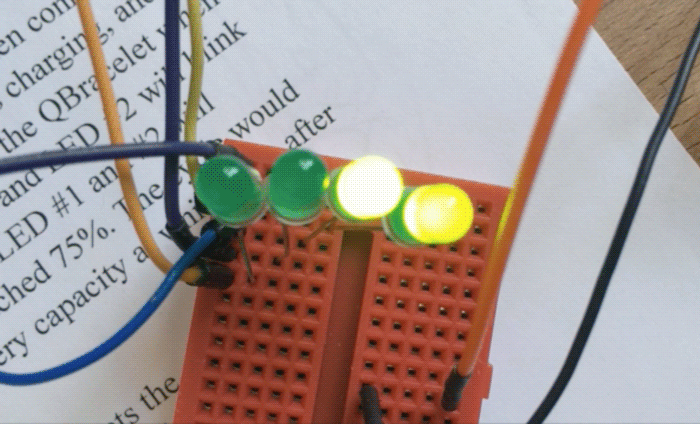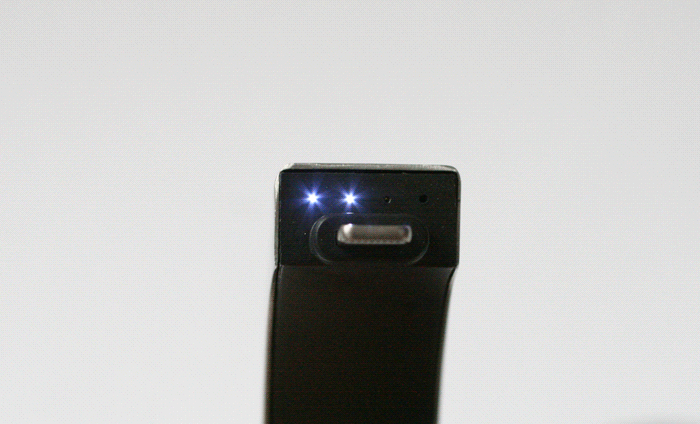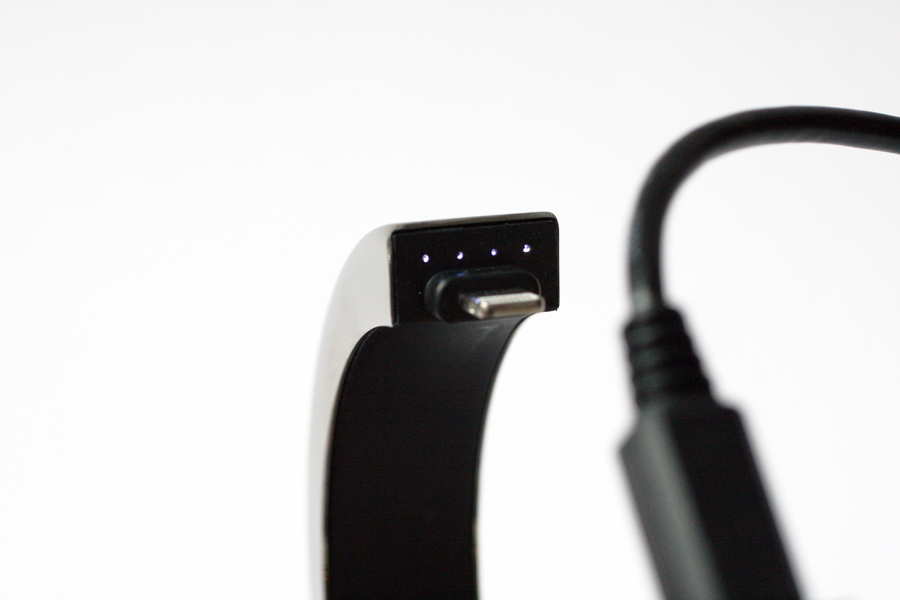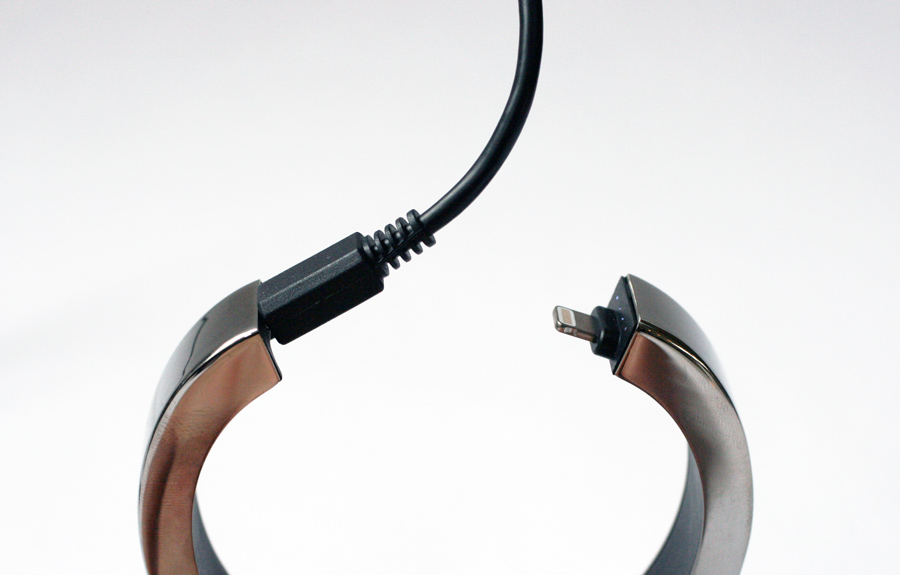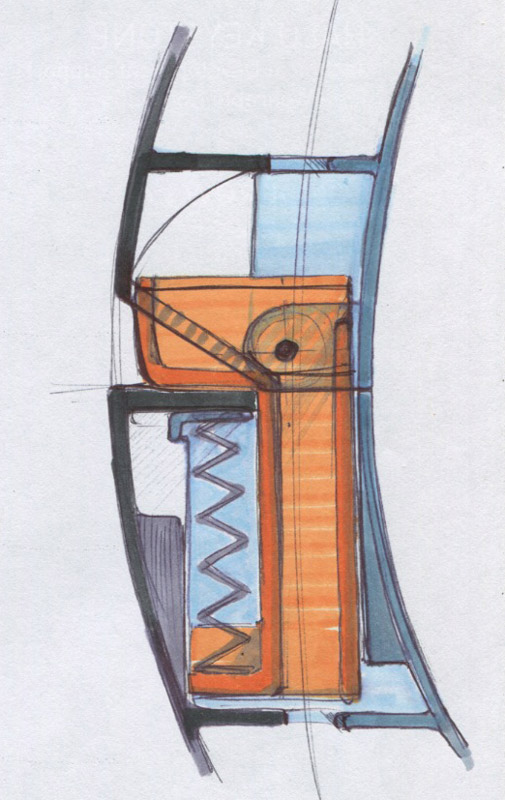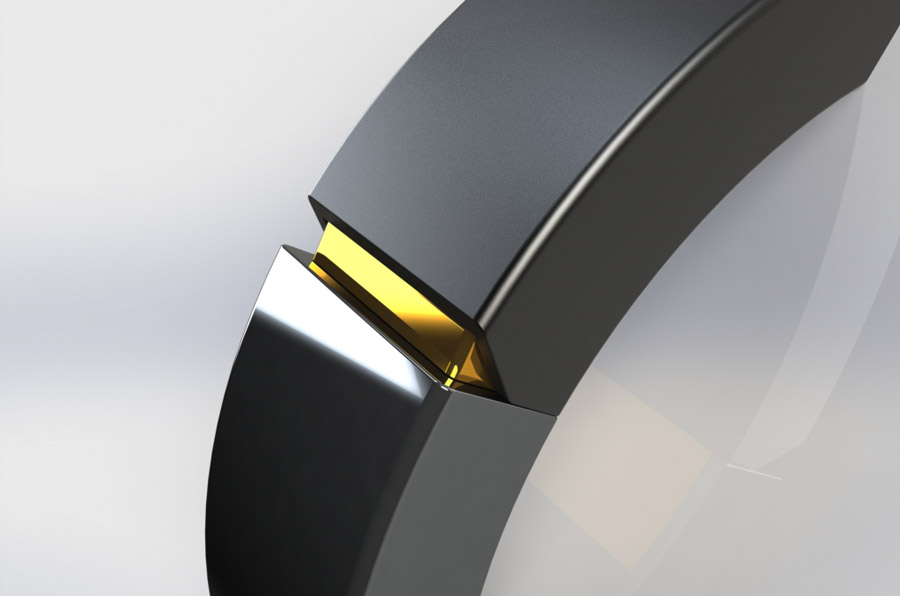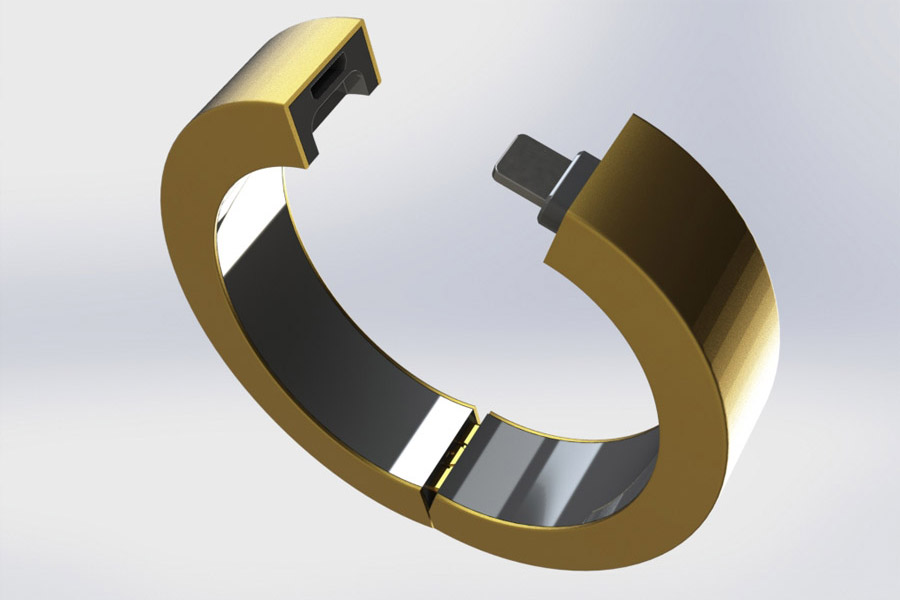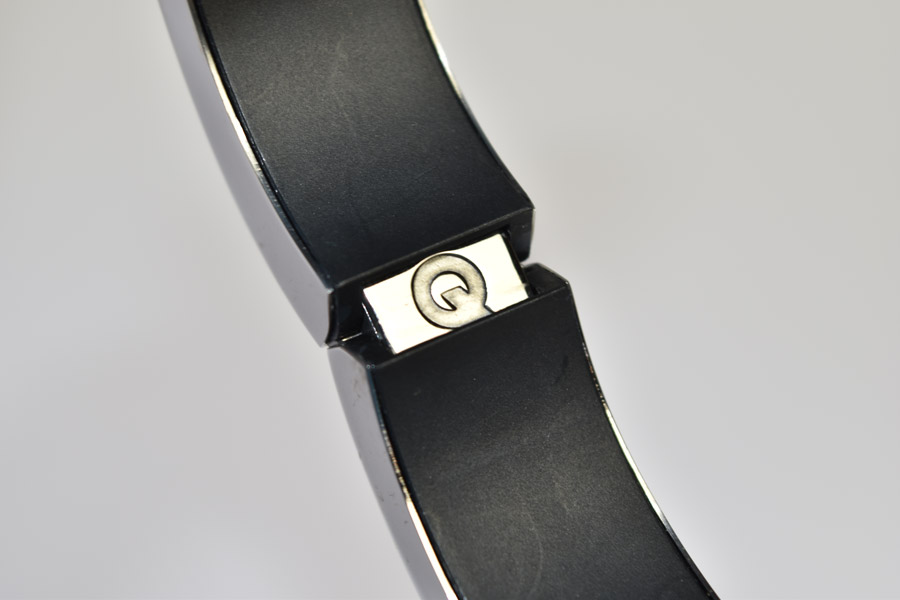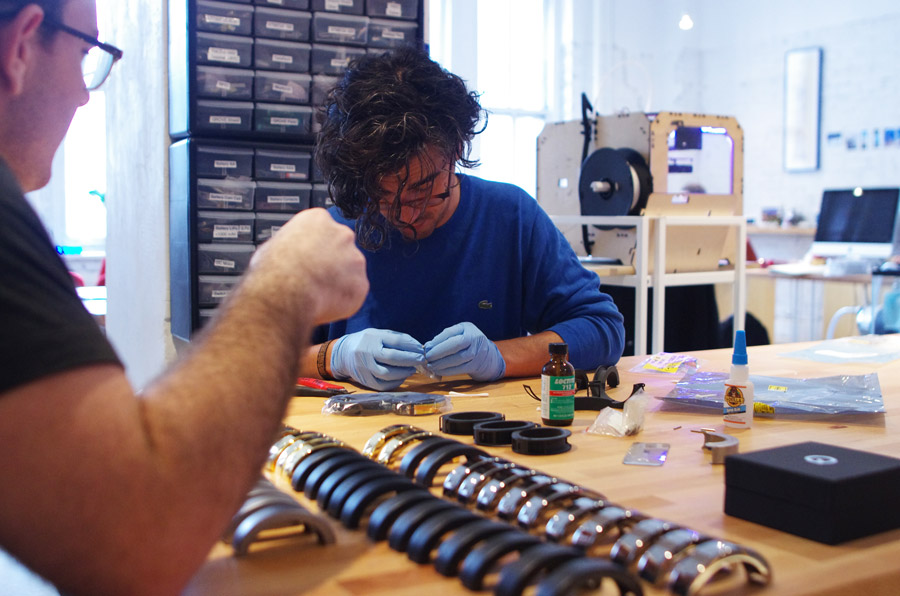
The QBracelet is a stylish wearable that charges your smartphone. With the basic product architecture in place, Q Designs partnered with Tomorrow Lab to solidify their design direction and prepare the product for manufacture. The QBracelet utilizes an Apple Lightning USB connector that is carefully tucked into the clasp of the bracelet with internal snaps. When a person is ready to charge their smartphone, they simply remove the bracelet, release the clasp, and plug it in!
This kind of redevelopment project is not our typical full three-phase scope of work, as we did not develop the initial Industrial Design direction. However, tackling the problem of curved, slender batteries, a flexible PCB, and refined manufacturability is right up our alley.
We began by reviewing the sketches, renderings, and early prototypes to identify flaws in both the overall PCB and battery placement design, as well as the basic manufacturability of the unit. By understanding the existing hinge and clasp design decisions, we determined that certain small changes would be mandatory to avoid manufacturing issues. Further review of internal components lead to important design changes that would require a full electrical overhaul.
Prototyping
Firmware
Electrical Engineering
Mechanical Engineering
Industrial Design
Design for Manufacture
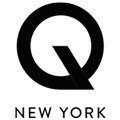
With the structure already in place, we engineered custom PCB and battery placement to fit into the design. To ensure maximum charge power, while maintaining the overall size, we chose paired, rechargeable 1,000 mAh batteries. The QBracelet will charge your iPhone 5S from zero to 50% in about an hour using a 1A discharge rate. The QBracelet recharges in 120 minutes.
In addition, we redeveloped the firmware to indicate the charge level of both your phone and the bracelet with four white LEDs. The two PCBs and custom flexible connector fit inside the bracelet and wrap around the curved batteries to allow power to extend from the batteries to the USB chargers. In order to capture maximum charge capacity, we conducted several test comparisons to determine the following variables: 1) speed of charge 2) power usage from the QBracelet to the smartphone 3) smartphone setting changes to allow a faster charge. We also tested the firmware to confirm the formula could continue to charge without interruption. Once each test returned consistent results, we knew the marriage between the firmware, battery, and PCB was a happy one.
When QDesigns came to Tomorrow Lab, they had a solid industrial design, but could not see how to make their product market-ready. By re-evaluating the hinge & clasp, and conducting a motion study with alternative design directions, we determined a change in the hinge would allow a full range of motion. Developing the precise clasp and closure to protect the USB connector created its own design challenge, and involved the electrical team to ensure we could get a proper charge at the right angle, while keeping the connector safe when not in use.
In addition to the product architecture needs, the QBracelet also had to look flawless. Creating something stylish and functional is difficult, and selecting material and manufacturing methods is crucial. The QBracelet weighs only 3.4oz, and comes in a small and large size carefully researched to fit a standard women’s and men’s wrist. The outer shell is made of stainless steel with four color options including: polished silver and gold, matte silver, and matte black.
